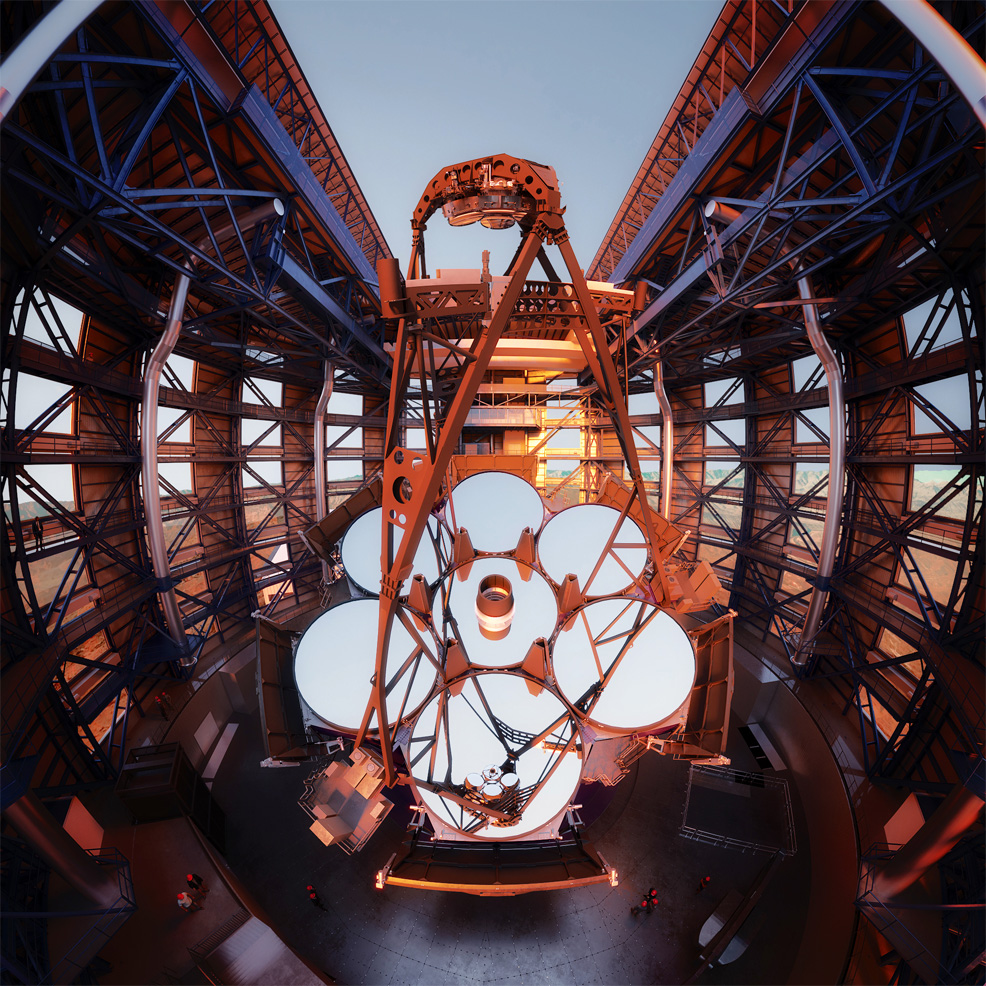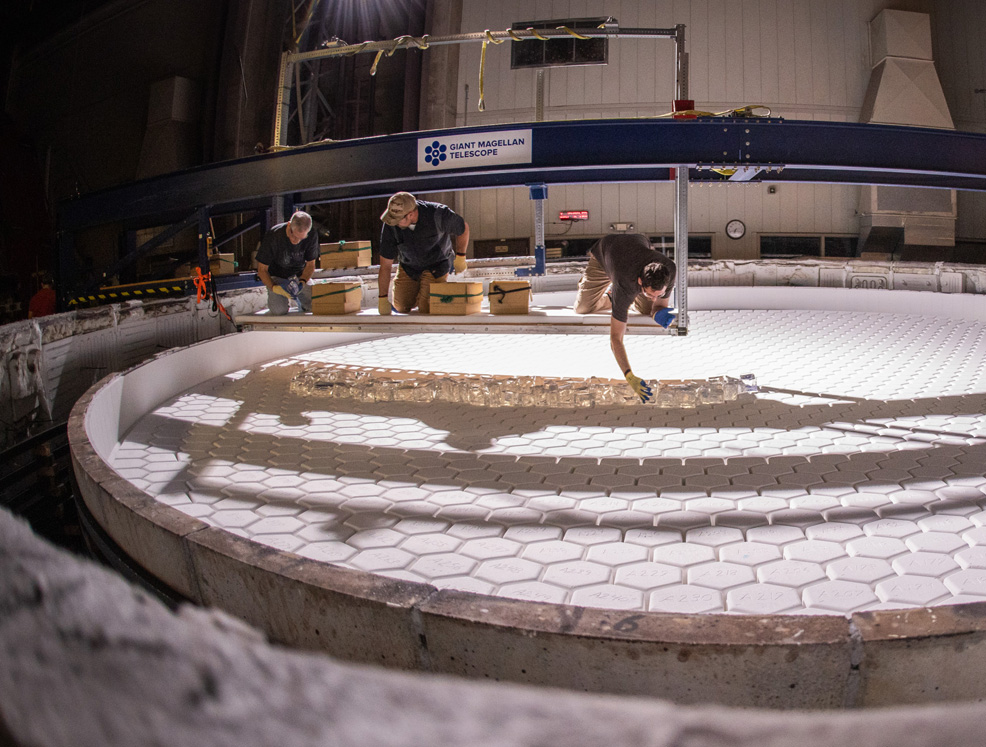
2nd October 2023 New telescope with 4x resolution of James Webb Work has begun on the seventh and final primary mirror of the ground-based Giant Magellan Telescope, which is expected to provide four times the image resolution of previous observatories when completed.
Scientists in the United States have begun fabricating and polishing the seventh and final primary mirror of the Giant Magellan Telescope. This will eventually complete its 368 square metre light collecting surface – forming the largest, most technically challenging optical system in astronomical history. When combined, all seven mirrors will collect more light than any other telescope in existence, making it a truly next-generation observatory. Nearly 20 tons of the purest optical glass have been placed inside a unique oven, located below ground in Tucson, Arizona. The oven will rotate at 5rpm while heating the glass to 1,165°C, creating a centrifugal force that shifts the material outward as it melts, forming the mirror's curved paraboloid surface. With a diameter of 8.4 metres, the mirror will cool over the next three months before moving onto the polishing stage. The entire process, from baking to completion, is expected to take four years. Because its mirrors are so curved and asymmetric, they are 10 times more difficult to polish than other large telescope mirrors. They require nanometre precision, with a surface finish so smooth that the highest peaks and valleys are less than 1/1000th the width of a human hair.
The most recently completed mirror is ready for integration into a giant support system prototype for final optical performance testing. This testing, to be conducted in early 2024, will serve as the dress rehearsal for all seven primary mirrors. Once assembled, they will work together in concert as one monolithic 25.4-metre mirror, a diameter equal to the length of a fully-grown blue whale. This is more than twice the size of current telescopes such as the Keck (10 m) and Gran Telescopio Canarias (10.4 m) observatories. The Giant Magellan Telescope is being manufactured with 2,100 tons of steel at a newly-built facility in Rockford, Illinois. It will be housed in a 39-metre-tall structure located at high altitude in the Atacama Region of Chile. In addition to its location providing clear skies for 300 nights a year, the use of adaptive optics will correct for atmospheric turbulence in real-time. It will operate at optical and mid-infrared wavelengths. If all goes according to plan, the unprecedented magnifying power of the finished observatory will result in four times the image resolution and 200 times the sensitivity of Webb, today's most advanced space telescope:
That could mean, for example, the characterisation of planets similar in size and composition to Earth. Currently, precise measurements of exoplanet masses are mostly limited to large worlds orbiting close to their star. But a new spectrograph developed by researchers at Harvard, known as the G-CLEF, should enable detailed measurements for Earth-class planets, including possibly those in the habitable zone where liquid water could exist. The G-CLEF spectrograph could also detect many important molecules in exoplanet atmospheres, including those created by life on Earth, such as molecular oxygen (O2). It will also study the formation of protoplanets and determine what chemicals are present on them. In addition to exoplanets, the new telescope will peer further back into cosmic history than ever before, capturing light from the universe's first galaxies and helping to reveal their formation processes. Its heightened sensitivity could aid in the detection of fainter celestial objects, such as distant dwarf galaxies and the elusive first generation of stars. Furthermore, it could provide critical data in the quest to understand dark matter and dark energy, refining our models of the universe's expansion and offering insights into the fundamental nature of these mysterious phenomena.
"The telescope will make history"
"The combination of light-gathering power, efficiency, and image resolution will enable us to make new discoveries across all fields of astronomy," explained Rebecca Bernstein, Chief Scientist for the Giant Magellan Telescope. "We will have a unique combination of capabilities for studying planets at high spatial and spectral resolution, both of which are key to determining if a planet has a rocky composition like our Earth, if it contains liquid water, and if its atmosphere contains the right combination of molecules to indicate the presence of life." "The telescope will make history through its future discoveries," said Buell Jannuzi, Principal Investigator for the fabrication of the Giant Magellan Telescope primary mirror segments. "We are thrilled to be closing in on another milestone in the fabrication of the Giant Magellan Telescope." The $2bn project is an international collaboration between institutions in the United States, Australia, Brazil, and South Korea, among others. The telescope is scheduled for operation in the late 2020s and is expected to remain in service for at least 50 years.
Comments »
If you enjoyed this article, please consider sharing it:
|









